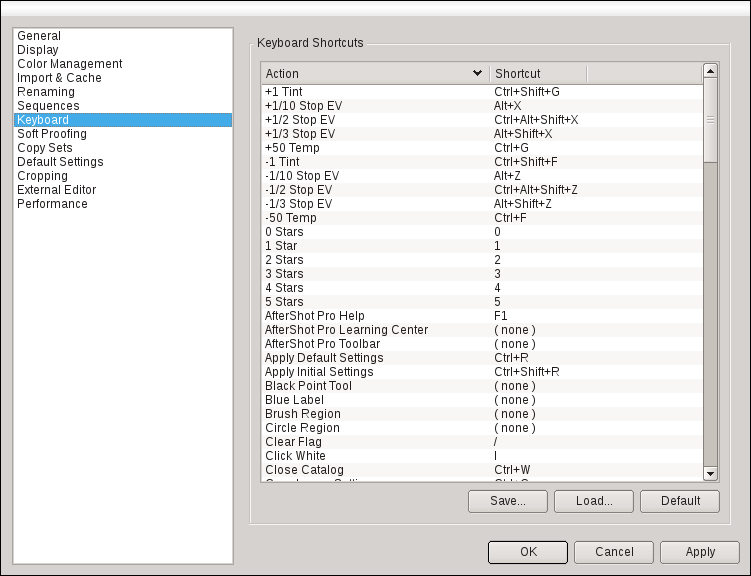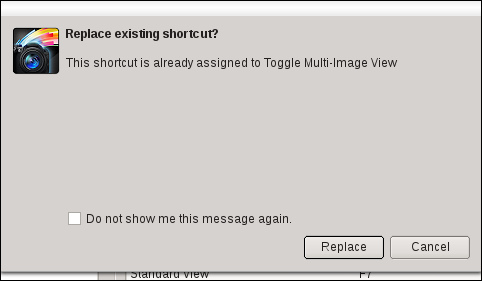In this chapter, we will make ourselves at home in AfterShot Pro. We will have a look at the key bindings, set up RAW and camera defaults, and customize AfterShot Pro's tool tabs layout.
There are some users who prefer to use the mouse, whereas others prefer to use the keyboard. AfterShot Pro can be used with either the mouse or keyboard, but is best used with both together. Having said that, you might want to adjust the key bindings for the various tools and functions to your liking. To do this, simply open the preferences dialog (via File | Preferences) and select the section Keyboard. You'll get an overview of the keys that are assigned to a particular tool or function.
It looks quite overwhelming, but that is simply because the developers mapped nearly every available function to a key. All the tools, dialogs and functions not mapped to a key are marked with the (none) shortcut.
As you can see, AfterShot Pro lets you Save... and Load... your key bindings. This is a good idea, especially when you have personalized your settings here. Not only can you share them with others, but you can store a copy at a secure backup location in case things go wrong. Speaking of things going wrong, if you end up with totally unusable key bindings, a click on Default will reset your key bindings so that you can start again from scratch.

If you scroll down the long list, you will see that Show Master File Location is not mapped to a key. Because you often need to find the master versions of your edited files, we're going to change that. Click on (none) to enter a new key binding.
Simply think of a suitable key and press it. Then approve it with a click on the tick. In this example let's chose the letter M. If this keyboard shortcut is still free, it will be registered with the tool immediately.

If the key is already assigned to another function, a window informing us what this letter is assigned to will pop up and give us the option to either replace the existing mapping or cancel our operation. In our example, M is already used to toggle Multi-Image View . You probably use this more often than finding master versions, so let's cancel and not replace.
The combination of Ctrl + Alt + M is not assigned to anything yet, so let's try it. As you can see, this assignment worked quite nicely.
You can also delete key mappings for tools and functions that you never use or happen to accidentally hit. Just select them and instead of ticking them off, click the small x to delete them.
